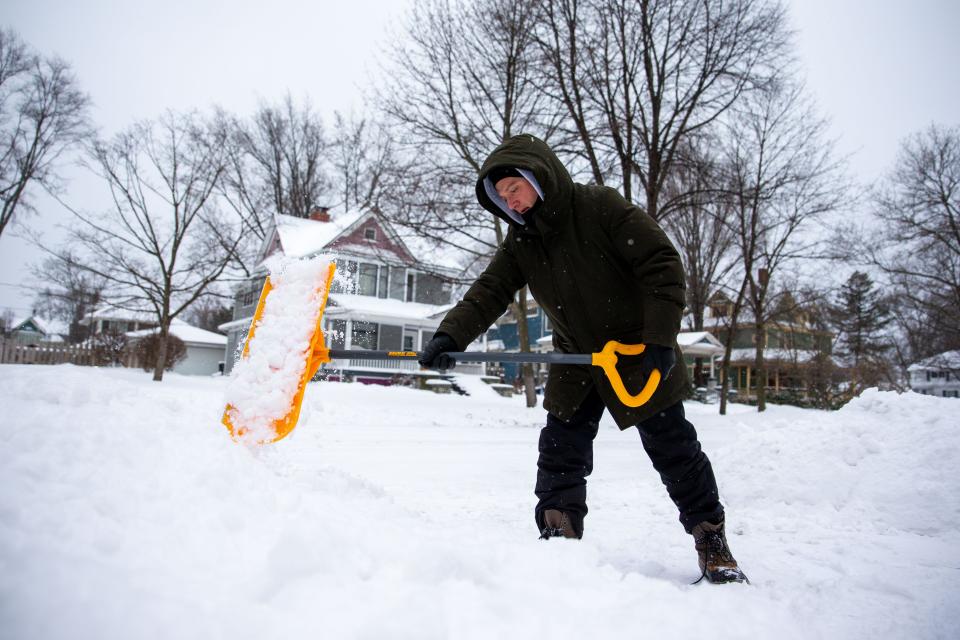MiSustainable Holland: Less salt on the roads will protect our watershed
HOLLAND — As freezing temperatures set in across West Michigan, road salt — made of sodium chloride — becomes a key tool in keeping roads safe.
Although sodium chloride is an effective way to melt ice on roads, it can negatively impact wildlife when used in excess. Leftover road salt — or de-icing salt used on sidewalks and driveways — washes into storm drains and ultimately into our waterways.
Once chloride enters the water, it can't be removed. It harms aquatic wildlife, as high concentrations of chloride become toxic. Excess chloride also alters soil chemistry, harms terrestrial plants and can even contaminate our drinking water.
A new study found chloride concentrations in Lake Michigan have increased from about 1 milligram per liter (mg/L) in the 1800s to over 15 mg/L today. Based on current trends, the chloride concentration in Lake Michigan is expected to rapidly increase by 1 mg/L every two to three years.
Chloride concentrations in Lake Michigan increase when the water entering from its many tributaries carries high concentrations of chloride.
Because the Macatawa Watershed flows into Lake Michigan, it’s important to consider how our community might be contributing to increased levels of chloride.
For two years now, chloride samples have been collected on a weekly basis from two different locations within our watershed to identify local trends. In the summer, we see chloride concentrations generally below 200 mg/L, while winter concentrations of chloride are typically 200 to 400 mg/L when road salt is being applied.

Lake Michigan has much more water than the Macatawa Watershed, which dilutes chloride concentrations. However, with so many bodies of water flowing into Lake Michigan, every community must be aware of their impact and aim to decrease chloride concentrations.
Our community is already doing a lot to decrease chloride levels within our watershed. The Holland Street Department closely monitors temperature and road conditions to optimize the amount of road salt being used, and it aims to use sand when possible.
Organizations throughout West Michigan are also working to educate the community about how to decrease our individual use of de-icing salt. Each one of us plays a crucial role in decreasing chloride concentrations in both the Macatawa Watershed and Lake Michigan.
Ultimately, the best way to decrease chloride concentrations in our waterways is to reduce the amount of salt being used.
Subscribe: Receive unlimited digital access to your local news coverage
Have you ever walked down a sidewalk and noticed salt crystals scattered about with no snow or ice? This is visible when too much salt is being used, so be sure to use only what's needed and sweep up any leftover salt after the ice has melted.
While ensuring road safety in the winter is crucial to keeping our community safe, this must be balanced. Because chloride concentrations are expected to increase so significantly in the upcoming years, it’s important to do our part now to protect all the life that depends on the water within the Macatawa Watershed and Lake Michigan.
— Sydney Quillian was a watershed intern with the ODC Network.
About This Series:MiSustainable Holland is a collection of community voices sharing updates about local sustainability initiatives.This Week’s Sustainability Framework Theme: Community Knowledge: The collective knowledge and energy of the community is an incredible resource that must be channeled to where it's needed.
This article originally appeared on The Holland Sentinel: MiSustainable Holland: Less salt on the roads will protect our watershed

